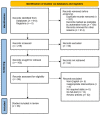Threat of Antimicrobial Resistance among Pilgrims with Infectious Diseases during Hajj: Lessons Learnt from COVID-19 Pandemic
- PMID: 37627718
- PMCID: PMC10451798
- DOI: 10.3390/antibiotics12081299
Threat of Antimicrobial Resistance among Pilgrims with Infectious Diseases during Hajj: Lessons Learnt from COVID-19 Pandemic
Abstract
Hajj pilgrimage is a large mass gathering global event that may facilitate the spread and emergence of various infectious diseases as well as antimicrobial resistance (AMR) in a local and global scenario. Planning and preparing for these public health issues is a challenging and complex process for the Kingdom of Saudi Arabia (KSA) health authorities. Despite multiple efforts for the prevention and treatment of infectious diseases through longtime funding in education and medical care, the prevalence of infectious disease is still high among Hajj pilgrims. The commonly observed infectious diseases during Hajj include respiratory tract infections (influenza and pneumonia), urinary tract infections and skin infections that may necessitate the use of antimicrobials. Beta-lactams are used as a first-line treatment for hospital acquired infections as well as community acquired infections due to their broad-spectrum activity. However, most of the bacterial isolates such as Staphylococcus spp., Pseudomonas spp. and E. coli are resistant to beta-lactams. Irrational use of antimicrobials, lack of infection prevention practices and suboptimal healthcare access further exacerbate the risk of spreading AMR among Hajj pilgrims. Enhanced collaboration between countries, sharing of best practices and international cooperation are crucial in addressing AMR threats among pilgrims. Consequently, robust surveillance systems for early detection and monitoring of AMR, collaboration with national as well as international healthcare agencies, effective infection prevention and control measures, public awareness and rational use of antimicrobials via antimicrobial stewardship programs are required to mitigate the risk of AMR and ensure the health and well-being of pilgrims during Hajj.
Keywords: COVID-19; Hajj pilgrims; antimicrobial resistance; preventive measures; surveillance.
Conflict of interest statement
The authors declare no conflict of interest.
Figures
Similar articles
-
The annual Hajj pilgrimage-minimizing the risk of ill health in pilgrims from Europe and opportunity for driving the best prevention and health promotion guidelines.Int J Infect Dis. 2016 Jun;47:79-82. doi: 10.1016/j.ijid.2016.06.013. Epub 2016 Jun 22. Int J Infect Dis. 2016. PMID: 27343984 Free PMC article.
-
Meningococcal carriage in Umra pilgrims returning from Saudi Arabia.J Travel Med. 2003 May-Jun;10(3):147-9. doi: 10.2310/7060.2003.35751. J Travel Med. 2003. PMID: 12757687
-
Clinical respiratory infections and pneumonia during the Hajj pilgrimage: A systematic review.Travel Med Infect Dis. 2019 Mar-Apr;28:15-26. doi: 10.1016/j.tmaid.2018.12.002. Epub 2018 Dec 4. Travel Med Infect Dis. 2019. PMID: 30528743 Free PMC article.
-
A Longitudinal Study Regarding the Health Profile of the 2017 South African Hajj Pilgrims.Int J Environ Res Public Health. 2021 Mar 31;18(7):3607. doi: 10.3390/ijerph18073607. Int J Environ Res Public Health. 2021. PMID: 33807142 Free PMC article.
-
Health Education Intervention as an Effective Means for Prevention of Respiratory Infections Among Hajj Pilgrims: A Review.Front Public Health. 2020 Sep 3;8:449. doi: 10.3389/fpubh.2020.00449. eCollection 2020. Front Public Health. 2020. PMID: 33014965 Free PMC article. Review.
Cited by
-
The dissemination of multidrug-resistant and hypervirulent Klebsiella pneumoniae clones across the Kingdom of Saudi Arabia.Emerg Microbes Infect. 2024 Dec;13(1):2427793. doi: 10.1080/22221751.2024.2427793. Epub 2024 Nov 21. Emerg Microbes Infect. 2024. PMID: 39508718 Free PMC article.
-
Antimicrobial Resistance Associated with Mass Gatherings: A Systematic Review.Trop Med Infect Dis. 2024 Dec 24;10(1):2. doi: 10.3390/tropicalmed10010002. Trop Med Infect Dis. 2024. PMID: 39852653 Free PMC article. Review.
-
Clinical Trials and Therapeutic Approaches for Healthcare Challenges in Pakistan.J Pers Med. 2023 Oct 30;13(11):1559. doi: 10.3390/jpm13111559. J Pers Med. 2023. PMID: 38003874 Free PMC article.
-
Malaria during COVID-19 Travel Restrictions in Makkah, Saudi Arabia.Trop Med Infect Dis. 2024 May 15;9(5):112. doi: 10.3390/tropicalmed9050112. Trop Med Infect Dis. 2024. PMID: 38787045 Free PMC article.
References
-
- Bokhary H., Rashid H., Hill-Cawthorne G.A., Abd El Ghany M. Handbook of Healthcare in the Arab World. Springer; Berlin/Heidelberg, Germany: 2021. The rise of antimicrobial resistance in mass gatherings; pp. 1199–1214.
Publication types
Grants and funding
LinkOut - more resources
Full Text Sources
Miscellaneous



